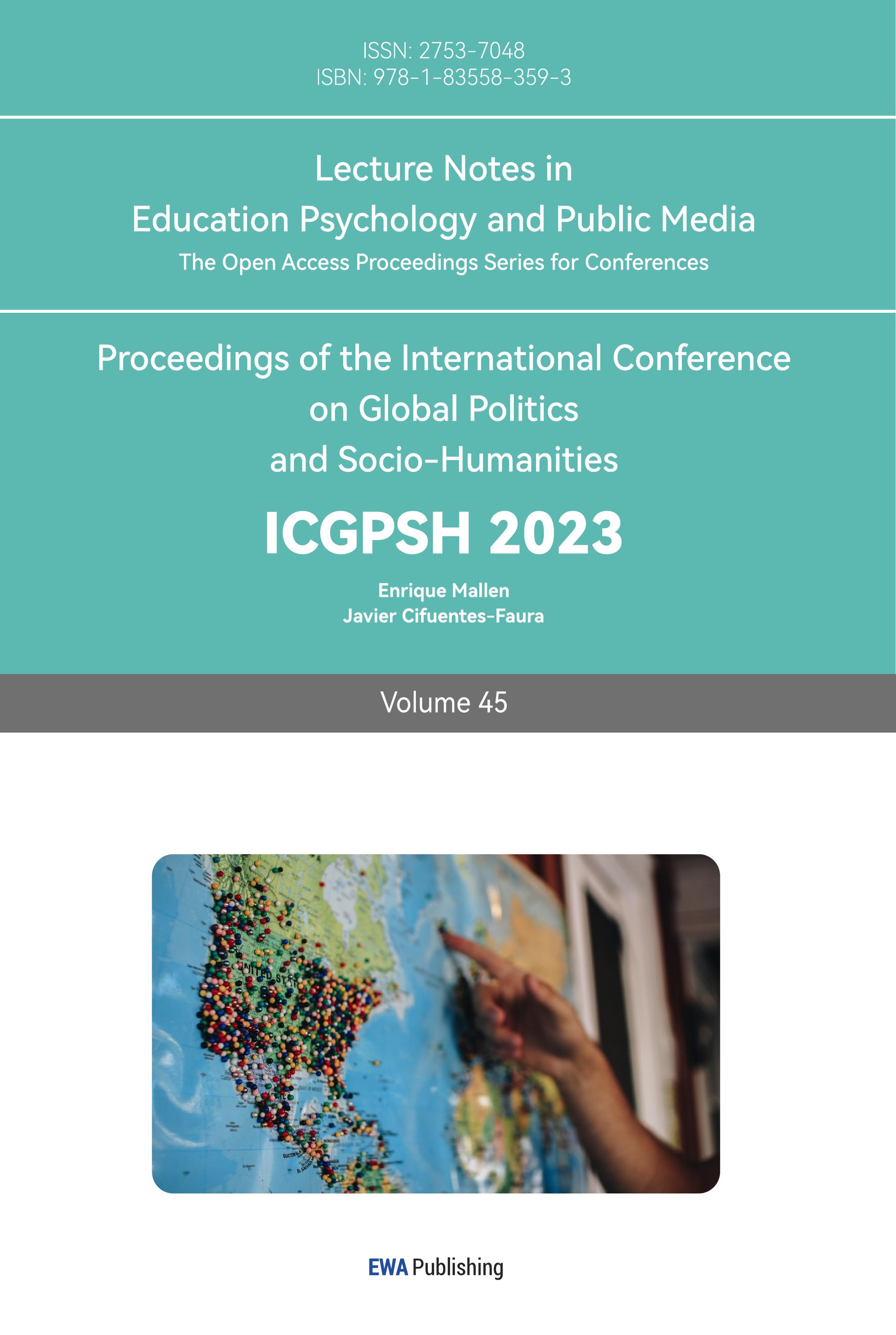References
[1]. Pang Lijuan.A comparative study on the psychological characteristics of different communication types in young children[J].Chinese Journal of Psychology,1993(3):306-313.)
[2]. Dale F Hay ,Alexandra Payne ,and Andrea Chadwick.Peer relations in childhood[J].Journal of child psychology and psychiatry 45:1(2004),PP 84-108.
[3]. Ning Xuehua, Hua Rong, Hu Yiqing.Progress in domestic research on the impact of peer relationships on children's social development[J].Early Childhood Education,2007(6).
[4]. Chen Chunyan.Research on children's peer relationship on children's social development[J]. Early Childhood Education,2007(6).
[5]. Carollee Howes,University of California at Los Angeles Social-emotional Classroom Climate in Child Care, Child-Teacher Relationships and Children’s Second Grade Peer Relations
[6]. Howes, C. & Ritchie, S. (1998). Changes in child-teacher relationships in a therapeutic preschool program. Early Education and Development, 4, 411–422.
[7]. Howes, C. & Tonyan, H. A. (in press). Links between adult and peer relations across four devel- opmental periods. In K. A. Kerns, J. Contreras, & A. Neal-Barnett (Eds.). Examining asso- ciations between parent-child and peer relationships. NY: Greenwood.
[8]. ANDERSON, S., & MESSICK, S. (1974). Social competency in young children. Develop mental Psychology, 10, 282-293
[9]. ASHER, S. R., & WILLIAMS, G. A. (1987). Helping children without friends in home and school. Urbana, IL: University of Illinois at Urbana-Champaign, Bureau of Educational Research. (ERIC Document Reproduction Service No. ED 283
[10]. DENHAM, S. A. (1986). Social cognition, prosocial behavior, and emotion in preschoolers: Contextual validation. Child Development, 57, 194
Cite this article
Chen,C. (2024). The Influence of Peer Relationships on Children's Social Development. Lecture Notes in Education Psychology and Public Media,45,221-225.
Data availability
The datasets used and/or analyzed during the current study will be available from the authors upon reasonable request.
Disclaimer/Publisher's Note
The statements, opinions and data contained in all publications are solely those of the individual author(s) and contributor(s) and not of EWA Publishing and/or the editor(s). EWA Publishing and/or the editor(s) disclaim responsibility for any injury to people or property resulting from any ideas, methods, instructions or products referred to in the content.
About volume
Volume title: Proceedings of the International Conference on Global Politics and Socio-Humanities
© 2024 by the author(s). Licensee EWA Publishing, Oxford, UK. This article is an open access article distributed under the terms and
conditions of the Creative Commons Attribution (CC BY) license. Authors who
publish this series agree to the following terms:
1. Authors retain copyright and grant the series right of first publication with the work simultaneously licensed under a Creative Commons
Attribution License that allows others to share the work with an acknowledgment of the work's authorship and initial publication in this
series.
2. Authors are able to enter into separate, additional contractual arrangements for the non-exclusive distribution of the series's published
version of the work (e.g., post it to an institutional repository or publish it in a book), with an acknowledgment of its initial
publication in this series.
3. Authors are permitted and encouraged to post their work online (e.g., in institutional repositories or on their website) prior to and
during the submission process, as it can lead to productive exchanges, as well as earlier and greater citation of published work (See
Open access policy for details).
References
[1]. Pang Lijuan.A comparative study on the psychological characteristics of different communication types in young children[J].Chinese Journal of Psychology,1993(3):306-313.)
[2]. Dale F Hay ,Alexandra Payne ,and Andrea Chadwick.Peer relations in childhood[J].Journal of child psychology and psychiatry 45:1(2004),PP 84-108.
[3]. Ning Xuehua, Hua Rong, Hu Yiqing.Progress in domestic research on the impact of peer relationships on children's social development[J].Early Childhood Education,2007(6).
[4]. Chen Chunyan.Research on children's peer relationship on children's social development[J]. Early Childhood Education,2007(6).
[5]. Carollee Howes,University of California at Los Angeles Social-emotional Classroom Climate in Child Care, Child-Teacher Relationships and Children’s Second Grade Peer Relations
[6]. Howes, C. & Ritchie, S. (1998). Changes in child-teacher relationships in a therapeutic preschool program. Early Education and Development, 4, 411–422.
[7]. Howes, C. & Tonyan, H. A. (in press). Links between adult and peer relations across four devel- opmental periods. In K. A. Kerns, J. Contreras, & A. Neal-Barnett (Eds.). Examining asso- ciations between parent-child and peer relationships. NY: Greenwood.
[8]. ANDERSON, S., & MESSICK, S. (1974). Social competency in young children. Develop mental Psychology, 10, 282-293
[9]. ASHER, S. R., & WILLIAMS, G. A. (1987). Helping children without friends in home and school. Urbana, IL: University of Illinois at Urbana-Champaign, Bureau of Educational Research. (ERIC Document Reproduction Service No. ED 283
[10]. DENHAM, S. A. (1986). Social cognition, prosocial behavior, and emotion in preschoolers: Contextual validation. Child Development, 57, 194









